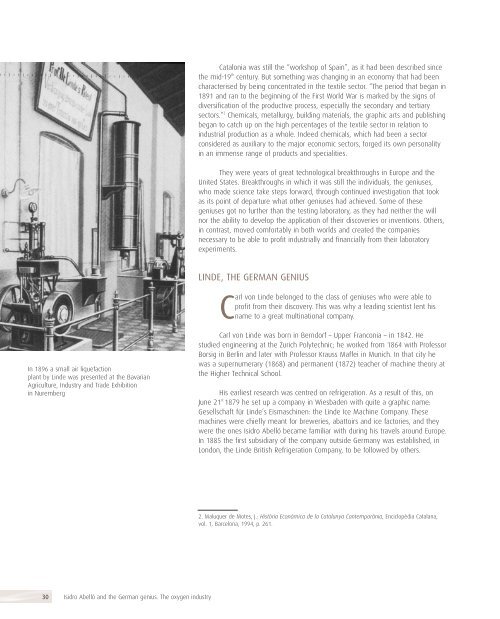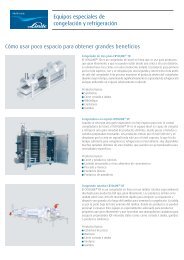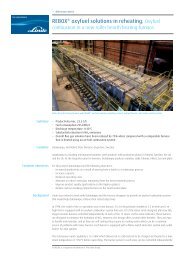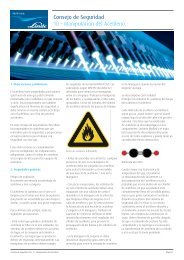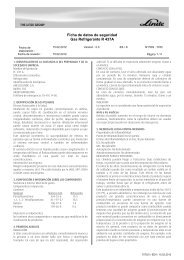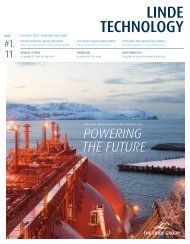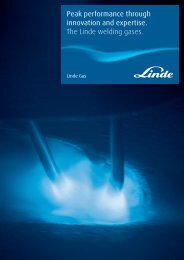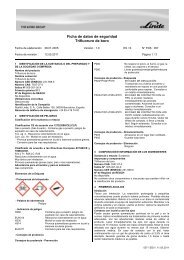Abelló Linde Centenary Book
Abelló Linde Centenary Book
Abelló Linde Centenary Book
Create successful ePaper yourself
Turn your PDF publications into a flip-book with our unique Google optimized e-Paper software.
Catalonia was still the “workshop of Spain”, as it had been described since<br />
the mid-19 th century. But something was changing in an economy that had been<br />
characterised by being concentrated in the textile sector. “The period that began in<br />
1891 and ran to the beginning of the First World War is marked by the signs of<br />
diversification of the productive process, especially the secondary and tertiary<br />
sectors.” 2 Chemicals, metallurgy, building materials, the graphic arts and publishing<br />
began to catch up on the high percentages of the textile sector in relation to<br />
industrial production as a whole. Indeed chemicals, which had been a sector<br />
considered as auxiliary to the major economic sectors, forged its own personality<br />
in an immense range of products and specialities.<br />
They were years of great technological breakthroughs in Europe and the<br />
United States. Breakthroughs in which it was still the individuals, the geniuses,<br />
who made science take steps forward, through continued investigation that took<br />
as its point of departure what other geniuses had achieved. Some of these<br />
geniuses got no further than the testing laboratory, as they had neither the will<br />
nor the ability to develop the application of their discoveries or inventions. Others,<br />
in contrast, moved comfortably in both worlds and created the companies<br />
necessary to be able to profit industrially and financially from their laboratory<br />
experiments.<br />
LINDE, THE GERMAN GENIUS<br />
Carl von <strong>Linde</strong> belonged to the class of geniuses who were able to<br />
profit from their discovery. This was why a leading scientist lent his<br />
name to a great multinational company.<br />
In 1896 a small air liquefaction<br />
plant by <strong>Linde</strong> was presented at the Bavarian<br />
Agriculture, Industry and Trade Exhibition<br />
in Nuremberg<br />
Carl von <strong>Linde</strong> was born in Berndorf – Upper Franconia – in 1842. He<br />
studied engineering at the Zurich Polytechnic; he worked from 1864 with Professor<br />
Borsig in Berlin and later with Professor Krauss Maffei in Munich. In that city he<br />
was a supernumerary (1868) and permanent (1872) teacher of machine theory at<br />
the Higher Technical School.<br />
His earliest research was centred on refrigeration. As a result of this, on<br />
June 21 st 1879 he set up a company in Wiesbaden with quite a graphic name:<br />
Gesellschaft für <strong>Linde</strong>’s Eismaschinen: the <strong>Linde</strong> Ice Machine Company. These<br />
machines were chiefly meant for breweries, abattoirs and ice factories, and they<br />
were the ones Isidro Abelló became familiar with during his travels around Europe.<br />
In 1885 the first subsidiary of the company outside Germany was established, in<br />
London, the <strong>Linde</strong> British Refrigeration Company, to be followed by others.<br />
2. Maluquer de Motes, J.: Història Econòmica de la Catalunya Contemporània, Enciclopèdia Catalana,<br />
vol. 1, Barcelona, 1994, p. 261.<br />
30 Isidro Abelló and the German genius. The oxygen industry


